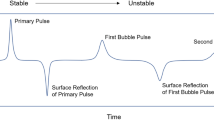Abstract
In ocean-bottom node (OBN) seismic exploration, a ghost is a common interference wave that affects the accuracy of seismic data interpretation. Receiver de-ghosting can be achieved using dual-sensor summation technology, which employs a hydrophone and geophone to collect seismic signals. The differences between the two receivers cause the polarities of the ghost wave signals to be opposite; therefore, the ghost waves can be eliminated by adding these receivers. However, there are differences between the actual data obtained from the hydrophone and geophone with regard to frequency, phase, and amplitude, thereby preventing them from being directly summated. Therefore, the frequency, phase and amplitude of both data records must be matched for consistency before dual-sensor summation can be conducted. In addition, some noise and ghosts will remain during data processing, resulting in a reduction in the signal-to-noise ratio of the data, making it necessary to adopt noise and residual ghost suppression methods. In this study, a wavelet analysis was newly introduced to the dual-sensor summation process. Specifically, the wavelet spectrum whitening method was proposed for the frequency matching of dual-sensor data, and the nonlinear wavelet transform threshold method of the wavelet denoising method was applied to suppress the noise and residual ghost. On this basis, a new dual-sensor process flow in OBN seismic exploration was developed. The feasibility and effectiveness of the method were verified using actual data. The method proposed in this study will help to improve the accuracy of future data processing.


















Similar content being viewed by others
References
Ball V, Corrigan D (1996) Dual-sensor summation of noisy ocean-bottom data//66th Annual International Meeting. SEG Expand Abs. https://doi.org/10.1190/1.1826622
Barr FJ, Sanders JI (1989) Attenuation of water column reverberation using pressure and velocity detectors in a wager-bottom cabled. Expand Abs 59st SEG Mtg. https://doi.org/10.1190/1.1889557
Bian GZ, Zhang LQ (1986) Spectral whitening of seismic data. Geophys Prospect Petrol 02:26–33
Chen CR, Zhou XX (2000) Improving resolution of seismic data using wavelet spectrum whitening. Oil Geophys Prospect 35:703–709. https://doi.org/10.13810/j.cnki.issn.1000-7210.2000.06.003
Donoho DL (1995) Denoising by soft-thresholding. IEEE Trans Inf 3:613–627. https://doi.org/10.1109/18.382009
Donoho DL, Johnstone IM (1995) Adapting to unknown smoothness via wavelet shrinkage. J Am Stat Assoc 90(432):1200–1224. https://doi.org/10.1080/01621459.1995.10476626
Dragoset B, Barr FJ (1994) Ocean-bottom cable dual-sensor scaling. SEG Tech Program Expand Admin. https://doi.org/10.1190/1.1932022
Fan XD, Zeng H, Liu YQ (1995) Time-space variant spectrum whitening of seismic data. Oil Geophys Prospect 30(4):550–5572
Gao SW, Zhao B, Gao X, Zhu KH, Li GF (2015) A method for OBC dual-sensor data matching. Oil Geophys Prospect 50:29–32. https://doi.org/10.13810/j.cnki.issn.1000-7210.2015.01.005
Gao SW, Zhou XY, Cai JM et al (2001) Surface consistent phase correction of reflected waves. Petrol Geophys Explor 36(4):480–487. https://doi.org/10.3321/j.issn:1000-7210.2001.04.014
Grossmann A, Morlet J (1984) Decomposition of Hardy functions into square integrable wavelets of constant shape. SIAM J Math Anal 15(4):723–736. https://doi.org/10.1137/0515056
Hoffe BH, Lines LR, Cary PW (2000) Applications of OBC recording. Leading Edge 19(4):382–391. https://doi.org/10.1190/1.1438616
Jiao J, Trickett S, Link B (1998) Ocean-bottom-cable dual-sensor summation: a robust approach. CSPG Special Publications.
Levy S, Oldenburg DW (1987) Automatic phase correction of common-midpoint stacked data. Geophysics 52(1):51–59. https://doi.org/10.1190/1.1442240
Liu ZD, Lu QT, Dong SX, Chen MC (2012) Research on velocity and acceleration geophones and their acquired information. Appl Geophys 9(2):149–158. https://doi.org/10.1007/s11770-012-0324-6
Morlet J, Arens G, Fourgeau E, Giard D (1982) Wave propagation and sampling theory—Part II: sampling theory and complex waves. Geophysics 47(2):222–236. https://doi.org/10.1190/1.1441329
Paffenholz J, Barr FJ (1995) An improved method for deriving water-bottom reflectivi-tiesfor processing dual-sensor ocean-bottom cable data. SEG Expand Abs. https://doi.org/10.1190/1.1887432
Qin N (2018) Merging method using the derivative of geophone data in OBC dual-sensor seismic processing. Prog Geophys (in Chinese) 33(3):1269–1273. https://doi.org/10.6038/pg2018BB0268
Quan HY, Han LQ (2005) Using OBC dual-receiver to suppress reverberation of water column. Oil Geophys Prospect 40:7–12. https://doi.org/10.13810/j.cnki.issn.1000-7210.2005.01.007
Ren LG, Zhang GD, Yang DK et al (2015) Analysis and application of phase different between velocity geophone and piezoelectric geophone. Prog Geophys (in Chinese) 30(1):0454–0459. https://doi.org/10.6038/pg20150167
Song YL, Zhang J, Yang HC (2004) Explored and receives problem of the oil gas seismic exploration in amphibious area. Prog Geophys 19(2):424–430. https://doi.org/10.3969/j.issn.1004-2903.2004.02.033
Tao J, Li B, Zhou XW (2019) Phase matching technology and its application in suppressing OBN reverberation. Geophys Geochem Explor 43:380–385. https://doi.org/10.11720/wtyht.2019.0007
Tong SY, Xiang F, Wang DK (2012) Suppression of reverberation by the technology of dual-sensor merger based on wiener filtering. Mar Geol Front 28:46–52. https://doi.org/10.16028/j.1009-2722.2012.10.005
Wang J (2012) High resolution seismic processing based on whitening of Hilbert spectrum. J China Coal Soc 37(01):50–54. https://doi.org/10.13225/j.cnki.jccs.2012.01.001
Xue WZ, Wang SR, Yang XY, Liu ZhH, Su Y (2013) OBC dual-sensor data processing on the Echos processing system. Oil Geophys Prospect 48:23–26. https://doi.org/10.13810/j.cnki.issn.1000-7210.2013.s1.005
Yan Q, Zhou DM (2012) The selection of basis functions of wavelet transform in signal analysis. Comput Telecommun 3:49–50. https://doi.org/10.15966/j.cnki.dnydx.2012.03.014
Yan ZH, Fang G, Xu HN, Liu J, Shi J, Pan J, Wang JQ (2018) The application of Hilbert spectral whitening method to high resolution processing of marine seismic data. Mar Geol Quat Geol 38(04):212–220. https://doi.org/10.16562/j.cnki.0256-1492.2018.04.019
Zhou XY (1989) Constant phase correction. Petrol Geophys Explor 24(2):119–129
Funding
This research was jointly supported by the National Key R&D Program of China (2021YFA0716902) and National Natural Science Foundation of China (41874123).
Author information
Authors and Affiliations
Contributions
All authors contributed to the research in the paper. Conceptualization: SS and QCL; Methodology: ZXW and GP; Formal analysis and investigation: ZXW; Writing—original draft preparation: ZXW and GP; Writing—review and editing: SS and QCL; Supervision: QCL All authors have read and agreed to the published version of the manuscript.
Corresponding author
Ethics declarations
Conflict of interest
The authors declare no conflict of interest.
Additional information
Publisher's Note
Springer Nature remains neutral with regard to jurisdictional claims in published maps and institutional affiliations.
Rights and permissions
About this article
Cite this article
Zhou, X., Guo, P., Song, S. et al. Applying wavelet transform to suppress ghost in ocean-bottom node dual-sensor technology. Mar Geophys Res 43, 5 (2022). https://doi.org/10.1007/s11001-022-09467-z
Received:
Accepted:
Published:
DOI: https://doi.org/10.1007/s11001-022-09467-z



